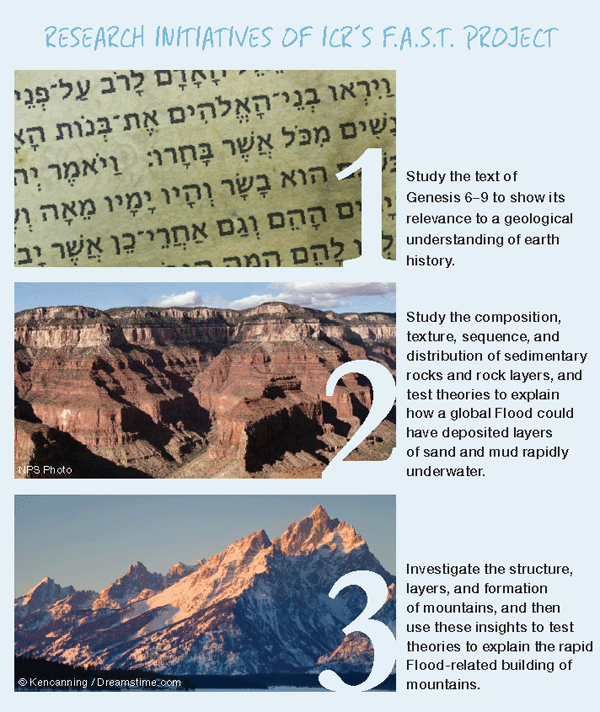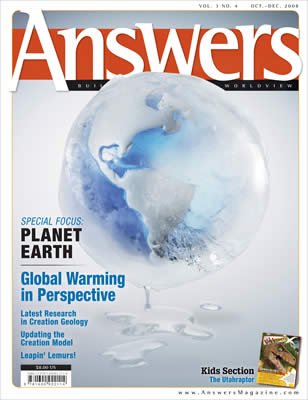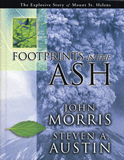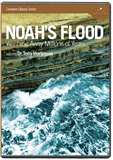F.A.S.T. and Furious
Creation geologists have undertaken a major new research project to better understand how the Flood deposited sediments across continents while tectonic forces within the crust reshaped the earth’s surface. Called FAST (Flood-Activated Sedimentation and Tectonics), this project is discovering Flood-related processes, such as “superfaults,” that will revolutionize our understanding of geology.
Perhaps the most defining event in the modern creation science movement occurred in 1961 with the release of The Genesis Flood by Drs. Henry Morris and John Whitcomb. Morris, a hydraulic engineer, and Whitcomb, a theologian, wrestled through biblical and scientific data to pen a comprehensive treatise on the authority and accuracy of the biblical account of Noah’s Flood.
Their purpose was to corroborate biblical history by demonstrating that (1) the original text of Scripture correctly stated that the Flood was a global judgment on the earth, and (2) the evidence from science demonstrates a global catastrophic flood event that changed the landscape of the earth forever, making the Flood one of the major tenets of the modern creation movement.
Those who deviate from the historical accounts of Creation, the Fall, and the Flood—those with hybrid or compromise theories of creation—do so at the peril of placing science over Scripture, of exalting the creation over the Creator.
But what physical evidences remain to support the biblical account of this worldwide disaster? A new research initiative by the Institute for Creation Research (ICR), founded by Dr. Henry Morris, is currently underway to uncover these evidences, and the preliminary findings are exciting.
Digging for the Evidence
Flood-Activated Sedimentation and Tectonics (FAST) is an ICR research program designed to examine the geologic evidence for catastrophic sedimentary and tectonic processes associated with Noah’s Flood. (Sedimentation refers to moving water and other fluids that deposit sand, mud, and other sediment. Tectonics refers to the faulting and folding of rock layers.) Headed by geologist Dr. Steve Austin, an international team of researchers will participate in this multi-faceted project to address and solve the difficult problems associated with the historical account of the Flood.
Dr. Austin describes three fundamental research initiatives in FAST:
1. The Flood Narrative initiative will study the text of Genesis 6–9 to show its relevance to a geological understanding of earth history.
2. The Flood Sedimentation and Stratigraphy initiative will study the composition, texture, sequence, and distribution of sedimentary rocks and rock layers; and it will test theories to explain how a global Flood could have deposited layers of sand and mud rapidly underwater.
3. The Flood Tectonics initiative will investigate the structure, layers, and formation of mountains, and then it will use these insights to test theories to explain the rapid Flood-related building of mountains.

Discovering the Details in the Text
Hebrew scholars are working with earth scientists to take a fresh look at the narrative structure of Genesis 6–9. By studying ancient Hebrew grammar, vocabulary, and literary structures, researchers hope to increase their understanding of the sequence and timing of events within the Flood narrative. Scientists want the Bible to guide how they think about the movement of earth and water during the global Flood.
The Stones Cry Out
Within the second initiative of FAST, earth scientists are conducting research in the southwestern U.S. to study the sedimentation of rock fragments, such as pebbles, sand, silt, and mud (technically this is known as clastic or fragmental sedimentation). The scientists are also studying the rock strata that these sediments produced. They are investigating three special rock types: conglomerate, sandstone, and mudstone.
Conglomerate rocks are a mix of stones of different sizes, such as pebbles, cemented together. Researchers suspect that underwater debris flows are the primary agents that produced the widespread and massive conglomerate layers we find today.
A special structure in sandstone, called crossbedding, resulted from the way that water currents heap up sand and move it in waves. Recent research on this structure reveals that water can quickly form crossbeds by flowing at least 3 feet per second (91 cm/sec). Coconino Sandstone of the Grand Canyon region has abundant crossbedding that argues for deep, fast-moving Flood waters over a submerged continent.
Mudstone is the most abundant and challenging rock type being studied. Conventional wisdom says that it takes a long time for mud to settle into thin layers of mudstone (called laminated mudstone strata). Can these layers be deposited rapidly, even with clay-size particles? Flume experiments indicate that currents moving about one foot per second (30 cm/sec) can produce mudstone laminae resembling shale if the water has clumpy (or flocculated) suspended material. Many scientists see a “mudstone revolution” taking place within geological science.
Besides these studies, geologists are looking more closely at the widespread layers of volcanic ash that give us clues about the timelines of strata formation. These timelines appear to demonstrate that, during the Flood, different types of sedimentation were taking place at the same time over the continent.
Prospecting for Superfaults
The third initiative of FAST is exploring how catastrophic plate collisions formed mountains during and after the Flood. Mountains of western North America, as elsewhere, were built primarily by huge movements between the rocks on either side of faults. How rapidly did these displacements occur?
In their preliminary research, scientists hypothesize that there are two kinds of faults. The first are regular faults, which occur every day in the earth, producing earthquakes and fault surfaces with powdered or pulverized rock. Second, evidence is mounting for the existence of superfaults, which have not been active in recent history. These superfaults involve very rapid displacements driven by gravity. They must have generated enormous friction and heat that vaporized or melted rock on fault surfaces. We can see excellent examples of superfaults in the Aleutian Islands of Alaska and in the Heart Mountains of Wyoming, evidence that catastrophic plate tectonics and giant gravity-driven landslides formed mountains.
Research that Magnifies the Creator
The research efforts of ICR continue to fine-tune our understanding of the world God made. The early studies by Drs. Morris and Whitcomb have spurred ongoing investigations into how and when the Flood occurred, as well as the devastating changes that resulted from this cataclysmic judgment on mankind. FAST researchers are working to uncover the vast amounts of evidence that demonstrate the veracity of the biblical account of the Flood, once again revealing the wonder and glory of God’s creation.
Answers Magazine
October – December 2008
In this issue get the latest information on the current creation models and down-to-earth information about global warming. Also, you won’t want to miss the Kids Answers section about dinosaurs.
Browse Issue SubscribeRecommended Resources

Answers in Genesis is an apologetics ministry, dedicated to helping Christians defend their faith and proclaim the good news of Jesus Christ.
- Customer Service 800.778.3390
- © 2024 Answers in Genesis





